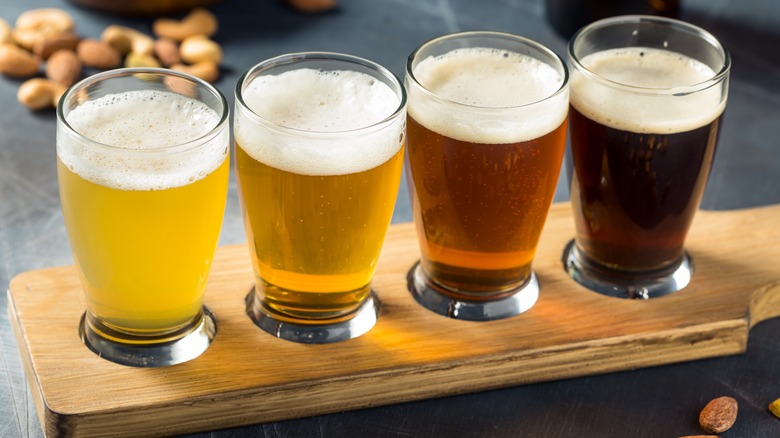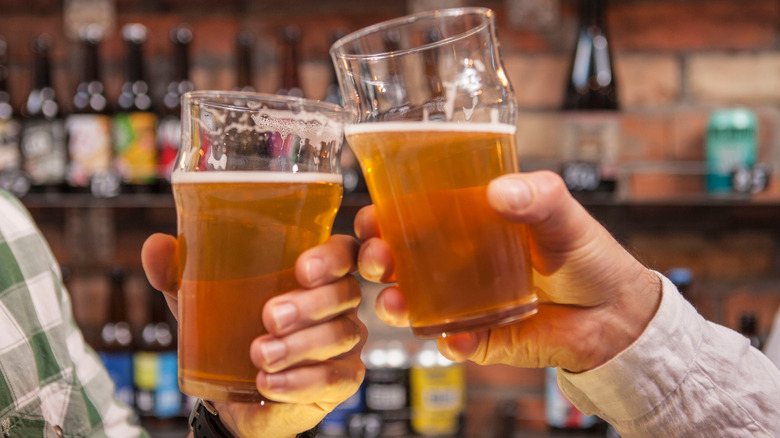Don't Be Fooled When Tasting Craft Beers, Says A Tasting Expert
If you're a beer fan, then you've likely come into contact with craft beer — after all, there are so many good craft breweries to choose between nowadays. While visiting a craft brewery, you may decide to do a tasting of their various beer choices, which can be a fun way to try a bit of everything before settling on your favorite. However, according to an expert, it's actually quite easy to be misled by the color of the beer and confuse the flavors.
To explain this phenomenon, we spoke with Mandy Naglich, a food journalist and advanced cicerone, who is also the author of "How to Taste: A Guide to Discovering and Savoring Life." Naglich explained, "Dark beers don't always have roasty toasty flavors — for example, a German doppelbock will have toffee and graham cracker malt flavors, even though it is quite dark." Additionally, even if a brewery crafts something a bit out there, such as a blue-colored beer, doesn't mean that it will have tropical notes — despite the fact that your brain may associate blue with tropical. Naglich added, "Often our taste buds run away with our preconceived notions and we don't pay attention to the flavor that is actually there."
Naglich also recommends learning about the basic flavors of beer
While speaking to Tasting Table, Mandy Naglich explained that there is a key way to limit how much your brain tricks you into mixing up color and taste: learn the basic flavors of beer. When looking at a beer menu, you've definitely come across terms such as "hops" or "malt" without really knowing what they mean. Well, learning those terms will help you be able to distinguish color from flavor a bit better.
Naglich said, "Malt flavors will typically be reminiscent of bread on some scale from raw dough to burnt loaf. Hops will bring flavors of plants like herbs, fruits, or trees. And the toughest element yeast may add light fruit or spice flavors or nothing at all."
Learning these basics will definitely set you up for success at your next beer tasting — and what better way to memorize these basics than by trying more beer? Naglich continued, "With practice focusing on these flavor categories you can learn a lot about the beer you're tasting from the first sip."

